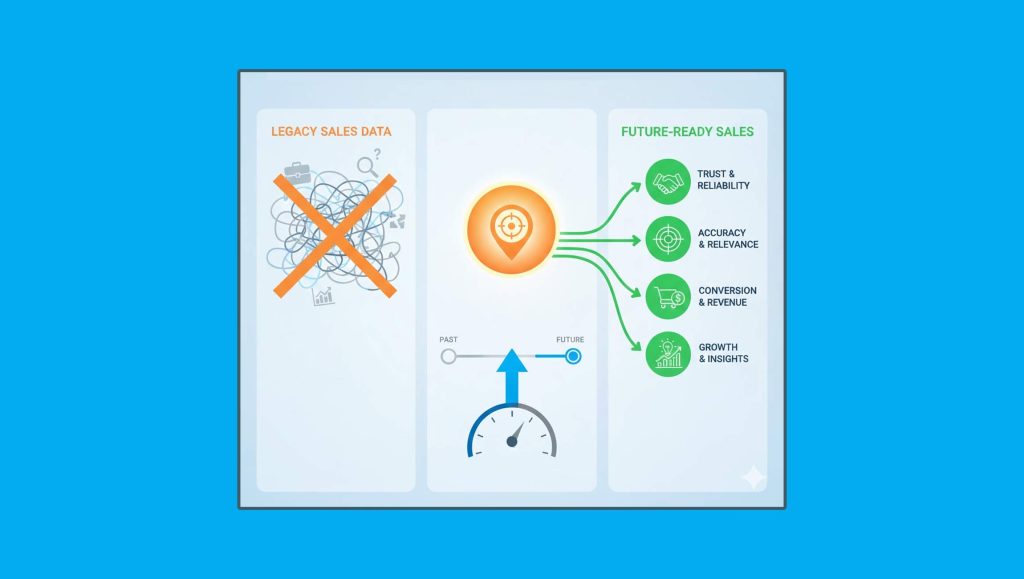An RFP is a business document that describes a project, asks qualified contractors to submit offers for its execution, and makes the project public. RFPs are the preferred method of project initiation by the majority of larger organizations, including many governments.
When employing an RFP, the organization asking for bids is in charge of assessing the viability of the offers received, the financial standing of the firms submitting bids, and each bidder’s capacity to carry out the project.
The RFP document turns into a mechanism for you to quickly learn about the advantages and disadvantages of potential vendors in respect to your project without needing to invest a lot of time in looking for them.
What is an RFP Used For?
RFPs are utilized for challenging projects that frequently call for a large number of subcontractors. They include information on the company sending the RFP, the project’s scope, and the standards for judging submissions. They also describe the bidders’ procedure and the conditions of the contract.
A statement of work defining the obligations of the chosen bidder and the due date is included in the requests.
RFPs often provide bidders with preparation instructions, including detailed instructions on the structure and presentation of the bids. They frequently provide instructions on what information must be submitted and in what format.
The government and other public sector organizations routinely issue RFPs. Generally speaking, they are necessary to neutralize the process and increase competition among private businesses. The agencies want to make sure they receive the cheapest and most aggressive offer.
However, any corporate or governmental body is permitted to issue an RFP in order to receive several offers and a range of viewpoints on the project.
For instance, a company that wishes to go from a paper-based to a computer-based reporting process can submit a request for proposals for the hardware, software, and user training programme needed to set up and integrate the new system within the company. A competitive bidding procedure could provide them with more information about the available options.
Advantages of an RFP
Part of an RFP is an advertisement. It lets capable applicants or service providers know that a project is moving forward and opens the door to them.
The RFP has been implemented in government as a means of ensuring that cronyism is eliminated as a factor in the awarding of contracts. Additionally, it invites competition, which is anticipated to keep project prices down.
An alternative to an RFP is a non-formal approach that calls for a project manager to research and identify potential providers for a project. Depending on how comprehensive the search is, the number of potential solutions may be limited. The likelihood of discovering new suppliers and creative solutions may be reduced.
Read More: SalesTechStar Interview with Gabriella Tegen, Founder & CEO at Smartrr
RFQ versus RFP
A request for quotation, or RFQ, differs somewhat from an RFP in that it just asks for a price. Here, businesses ask different providers for numerous price estimates so they may evaluate services just on price. An RFQ just specifies the price, but an RFP also offers other details (including a price quote).
An RFQ is a request for quotation, as opposed to an RFP.
Here’s how to recognize the distinction:
In an RFP, you technically get a price but you also get information about the completion date, the deliverables schedule, and the services offered.
However, when you submit an RFQ, you only get the estimate for the service or goods you’re interested in buying.
Why Do Companies Develop RFPs?
RFPs are created by businesses for the following reasons:
You may evaluate how well each vendor comprehends your project by outlining your organization’s requirements in an RFP.
RFPs aid nonprofit organizations and governmental bodies in ensuring openness. The public may see that they are responsible for the project’s objectives and vendor selections.
Organizations are encouraged to establish benchmarks to gauge project progress by writing an RFP.
How Can B2B Tech Teams Optimize RFP Processes?
Even though developing RPFs can take a lot of time, research from the RFP Response Management Benchmarks and 2020 Trends report reveals that 41% of all sales revenue comes from RFPs. Up to 39% of revenue from RFPs is derived from client retention, which can have an influence. RPFs are also not going away anytime soon, as 63% of survey participants said they anticipate responding to more RFPs each year.
Hence RFPs should be embraced and seen as a source of fuel for revenue growth by B2B tech teams and marketing teams. Consider, for example, that your company has received an RFP (Request for Proposal). To finish the response, you speak with the sales department to obtain the content, which you then include in your proposal. You conclude with a nicely produced proposal, but there is still a problem: the content does not accurately describe your business, which means that your attempt to gain new business will fail. This problem results from a phenomenon called content chaos.
Content chaos happens when locating the content you require is not possible and hence it leads to slow, inefficient and incorrect responses to RFPs. A prime example of this comes from a client, who realizes their agreed Scope of Work (SOW) which contains out of date information and it requires the sales team to go back and renegotiate with new terms.
As a result, responses to RFPs become delayed, ineffective, and inaccurate due to content chaos, which occurs when it is impossible to locate the content you need. A client that finds their agreed-upon Scope of Work (SOW) contains outdated information and understands they need to renegotiate with new terms is a good illustration of this.
As a result, the following six qualities of content management can perfect an answer and eradicate content chaos:
1. Accept only one source of truth
We don’t take the time to reflect on the content we produce. Too many textual, visual, and audio materials can be produced, but if they are stored on computer drives until they are no longer required or useful, they may be wasted.
In B2B firms today, 60 to 70 percent of content is not used to a proper extent. So, you should start storing all content in a single location like a team drive, folder, etc. to reduce the amount of unused content in your company. In this manner, everyone in your organization will be aware of where to get the materials they require for proposals.
2. Give ownership
Your content management could suffer greatly from a lack of responsibility in your company. Determine who is in charge of each piece of information and give them the responsibility of updating it as necessary. With time, the updates should be available.
As a result, you won’t have to take on the burden of manually updating a large amount of data. By dividing up the workload among the team members, you can meet with others to make sure you get the most recent content without having to bear the strain alone.
3. Include an end date
Although the dates by which each piece of content will stop to be valid vary depending on the organization, this is still a good practice. This will stop your organization from submitting data that your company used to supply but no longer does. So, you know what is valid and what is not as per the current state.
This advice requires careful attention to detail, therefore creating rules for how long particular content is valid. In this manner, you may maintain track of material updates through monthly and yearly evaluations, keeping you ready for an upcoming proposal submission.
4. Create and adhere by taxonomy
The use of suitable search taxonomy, which allows you to quickly find each piece of material, is another critical element of managing your content. Making sure your content is simple to find will benefit your team members and make it easier to update some papers.
You are completely free to use any kind of storage structure you choose. For example, establishing a folder structure on the drive to reduce duplication and also make it easier for the team to do searches.
5. Select content librarians
By hiring a content librarian, your library will have a custodian to monitor updates and make necessary changes to the content. Your content management will improve if you give one individual more authority, and you’ll keep your content RFP-ready.
Consider this librarian as a watchman guarding the perimeter of your library against a Content Chaos intrusion. Your stuff will be safe and prevented from being disorganized by having a guard on duty.
6. Track important metrics
Last but not least, you must decide what metrics are crucial for your company to follow and then develop a reporting system to do so. Despite the fact that reporting requirements can differ from company to company, those with specific legal compliance issues will want to know the veracity of the information offered in proposals.
Establishing essential metrics will keep your data current and provide a more precise measurement of success.
Top Tools that Enable Better RFP Cycles
You can see that the RFP is significant and that employing RFP proposal tools can assist with everything from peer networking to proofreading. Some are basic, free applications that can be used as RFP response tools. Others are created especially to provide the RFP process with high-value features.
Let’s examine the top RFP response technologies for the typical problems that proposal managers encounter. With these RFP resources at your disposal, you’ll be prepared for anything this year and manage RFP proposals more accurately.
1. OneTrust
With more than 10,000 clients, OneTrust is perhaps the most well-known brand in data and risk management. It is a reliable solution suited for large and corporate enterprises. The platform controls internal and external data security, privacy, and governance with a focus on regulatory compliance.
OneTrust is a product with significant ROI potential for procurement teams. It serves as a tool for internal evaluations, data security management, and more in addition to vendor management. The application is also used by users in international organizations to manage complicated rules that vary depending on jurisdictional location.
2. OnSpring
The mission of Onspring is to enable automation in system administration and business processes. The software is a fantastic choice for controlling vendor risk and compliance for procurement teams looking for faster operations. They not only highlight hazards but also offer recommendations for correction.
Reviews offer Onspring’s customer service almost flawless ratings. Although clients may personalize the system, they experience virtually instant ROI with out-of-the-box capability. Finally, Onspring is a prominent participant in the Kansas City IT scene, much like RFP360 is.
3. RACI Matrix
Everyone is brought together via a RACI matrix. The roles and duties of each person involved in your RFP process, from subject matter experts (SMEs) through approvers, are organized using a table-based system.
It explains in detail how each contributor will contribute to the proposal when used as an RFP tool. It outlines who is accountable, involved, consulted, and informed for each project job.
4. VenMinder
This third-party risk management application aids in centralizing and standardizing vendor data for procurement teams. Venminder aims to proactively detect and reduce risk by providing tools for new vendor onboarding, vendor risk evaluations, and continuing reporting. Vendminder uses an exclusive limitless user model to promote company-wide awareness of ongoing risk management initiatives.
The software is very simple to use and facilitates the administration and storage of documents. Utilizing the Venminder organization’s experience for compliance, risk, and legal problems is one of the main advantages consumers mention.
5. Conga
Conga’s system, one of the most well-known and popular contract management systems, is intended to increase uniformity and compliance. Your team can also manage how contracts are written, communicated, and stored thanks to the system. Workflow automation solutions for contract drafting, negotiation, approval, and tracking are also available through Conga.
Conga provides a wide range of integration and customization possibilities, and is frequently used by IT and computer software companies. Reviews of the user interface and usability are conflicting at the same time. For teams which primarily struggle with effective document production, version control, and clause uniformity, Conga can provide a quick return on investment.
6. ProofHub
For proposal managers and their teams, having a variety of potent planning and management tools in a single piece of software is very helpful. A project and communication management tool that works effectively for teams of all kinds in a variety of industries is called ProofHub.
ProofHub equips proposal teams with the tools they need to easily plan, coordinate, organize, and execute on-time RFP responses while maintaining team responsibility, including online proofreading, task management, file management, and scheduling calendars in addition to Gantt charts, Kanban boards, and time tracking. This cloud-based SaaS platform is simple to use and has a low learning curve, making it simple to onboard new members, SMEs, and proposal authors.
7. Gatekeeper
The primary goal of Gatekeeper is to increase vendor value through contract management. You may track vendor information, manage contracts, and improve operations via this cloud-based application. A single source of truth for vendor contracts and communications is created by Gatekeeper.
How many current contracts are there, for example? may be swiftly answered by businesses using this simple-to-use procurement platform. When do agreements expire? What kind of financial commitment are these contracts committing to? Electronic contract signings, expenditure reporting, contract renewal notifications, negotiation notes, obligation monitoring, vendor performance scorecards, and other capabilities are all available on the platform.
Transforming RFPs from Obstacles to Opportunities, Tips for 2023
According to Loopio’s RFP Response Benchmarks and Trends Report, requests for proposals (RFPs) account for a staggering average of 35% of yearly sales income. Despite the recent economic unpredictability, according to the study, which polled more than 650 teams, RFPs will remain a crucial component of sales growth.
Nevertheless, even under the best of circumstances, responding to RFPs may be difficult. The sales cycle might be complicated by busy technical specialists, strict deadlines, and challenging approval procedures.
Read More: How Conversational AI Can Recession-Proof Your Business by Unlocking Revenue
Six strategies to turn RFPs into opportunities
So how can sales teams prioritize quickening their reaction time while still boosting income for the coming year? The following six best practices, based on the actions of high-performing teams identified by Loopio’s research, can be used by sales teams to turn those annoying RFPs into opportunities in 2023.
1. Choose a lead for the RFP
Building process efficiencies should start far before you receive a request when it comes to responding to RFPs. According to research, top performers have a designated RFP team or member(s) of the sales team that are in charge of the response process.
The research shows that stress levels reduce when the RFP process is owned by a committed individual or team compared to those with ad hoc ownership. But do levels of stress really affect performance? Yes, it is the solution. Teams who are less stressed out perform better than other teams, with response rates that are 5% higher and victory rates that are 10% higher. In essence, a dedicated RFP lead aids sales teams in responding to more RFPs more quickly. Whether it’s a dedicated team member from the firm or a salesman who includes this task in their role, make sure your team has someone managing and owning RFP initiatives so they don’t get off course or ignored.
2. Take initiative rather than react
One thing to keep in mind is that your response process shouldn’t begin as soon as you get an RFP. There’s a good probability that the person you’re connecting with or the client you already work with has given you a heads-up about a forthcoming RFP. Spend a time informing your staff in advance of any prospective RFPs. It will provide your team the chance to free up time in their schedules for this project and think about the crucial ideas required to win the bid. Try developing a straightforward intake form to proactively handle the forthcoming work if your team doesn’t already have a consistent procedure for accepting RFPs.
What should be on an RFP intake form is as follows:
- Business name
- Route details for sales (geographic region, vertical, and company size)
- Format for a sales request response (web-based portal, Excel spreadsheet, or Word document)
- Expires on Prospect’s requirements and possibly fundamental ideas (i.e. themes that differentiate your company from competitors)
3. Choose the RFPs that are worth responding to carefully
It’s not always easy to succeed by responding to more bids. Spending this much effort on bids that are unlikely to be accepted is just not in your best interest because the typical RFP contains 115 questions and requires 23 hours of writing time to complete. So how can you determine whether it is worthwhile to reply to an RFP? It all comes down to consumer fit. Top-performing RFP teams, defined as those that win more than 51% of their bids, employ a go/no-go decision template 72% of the time to choose which RFPs to accept.
You may concentrate on prospects that are of the highest quality and have the most commercial value by putting in place an efficient decision-making procedure up front. Additionally, a simplified and effective approach will give you more time to concentrate on what really matters—closing transactions and reaching your goals.
Your team will be able to choose which RFPs to accept more rapidly if you create a scoring system. The free go/no-go decision template from Loopio is a wonderful place to start. It highlights the key elements sales teams should take into account when assessing their chances of winning an RFP.
4. Automate the way you respond.
Sales teams may create a first draft of an RFP in minutes rather than hours with the correct software. In fact, data demonstrates that teams who use specialized RFP response software send 43 more RFPs yearly on average than those who do not. Through intelligent libraries that automatically recognize and pre-fill responses to questions based on prior responses, RFP software eliminates laborious elements of the response process. Projects can be centralized in one location for improved collaboration and to resolve version control problems.
No big surprise Top-performing RFP teams employ response software to speed up their workflow in 69% of cases. Most likely as a result of software’s ability to increase proposal quality and efficiency, both of which are associated with greater win rates. However, there is also a significant qualitative advantage: staff members at companies employing RFP software are 11% more likely to report that their team has a reasonable level of stress.
Following are some indicators that your team could profit from an RFP solution:
- Each month, do you respond to more than one RFP or security questionnaire?
- Do each RFPs have five or more contributors? (Remember to include executive, legal, and security approvals.)
- How frequently do you respond to the same questions in your RFPs? (Is it at least 40%?)
Your team would probably gain from implementing RFP automation if you indicated “yes” to the aforementioned questions.
5. Make an RFP content library
When asked about their biggest obstacles throughout the RFP process, respondents most frequently mentioned picking the best response from a range of possible responses, working with internal subject matter experts (SMEs), and getting accurate answers to questions fast. 27% of teams that brainstormed ways their business may enhance how they store and search their RFP information proposed doing so in order to increase the number of RFPs their firm receives in 2021.
A significant game-changer is having a central repository of precise, pre-approved, and current sales information that is simple for your sales staff to find and access.
Your team may collect the most useful and pertinent material in a content library so that it is simple for other team members to discover it anytime they need it for a proposal, email, or sales call.
The simplest way to create a library of RFP information is through a dedicated RFP response software solution, however a shared Google Drive folder or Microsoft 365’s SharePoint may also be used as a temporary fix.
It will take time to expand the library, but the work will be worthwhile. Eventually, you and your team will be able to swiftly put together a preliminary draft of a proposal using this library of inside experience. Then, all you have to do is enlist your SMEs for quick reviews and fact-checks of the winning bid.
Since these responses will be the most current, start by adding responses to your five to ten most recent suggestions. Then, add the fresh replies to your library each time you finish a fresh RFP.
6. Create a large pool of professionals to help with proposals
The adage “too many cooks ruin the broth” may be true, but RFPs are an exception. Actually, the reverse is true. Best-in-class RFP teams, according to research, often include 10 contributors. The quality of the entire proposal and your chances of winning are improved by increased cooperation, which increases the likelihood that bids will contain information from throughout the firm. It’s vital to remember that the number of contributors varies with the size of the firm.
Although it has been demonstrated that having more collaborators increases win rates, there are still difficulties. When asked what steps their business should take to win more RFPs in 2021, the majority of respondents (29%) said it should require internal SMEs to react to requests more quickly.
Some strategies your group can use to overcome this possible obstacle and enhance teamwork are as follows:
1. Facilitate communication within the team
Utilize technologies, such as a specific Slack channel, to establish a feedback loop concerning RFPs with teams. This makes it simple for team members to alert you if they discover an RFP response is out-of-date or lacking details that can help you win in the future (sharing competitive intel in this channel is key). If they’re integrated with tools that your sales staff currently utilizes, bonus points.
2. Enlist the assistance of your SMEs in advance
Make sure your SMEs are ready in advance of an RFP and that key dates are communicated effectively. An efficient technique to get all stakeholders to concur on the timetable and their degree of engagement is to have a launch call.
3. Every quarter, plan to conduct frequent content evaluations
You can reply to RFPs fast and with a great deal less work if you have a content library with current and new information. Additionally, the material won’t require as many modifications, and you won’t need to communicate back and forth when a deadline is approaching.
Conclusion
The demands of businesses are changing everyday thereby impacting project management, design, and submission processes.
Even the most savvy and seasoned businesses may find it difficult to deliver on new and shifting expectations at an unprecedented time. However, these steps may help you overcome whatever challenges your business may be currently dealing with. Additionally, having the appropriate people, systems, and tools in place can help your team handle RFPs more successfully and, eventually, submit more competitive bids.





















